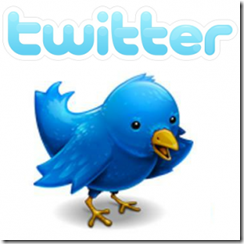Some people can’t stand it, others can’t live without it.
Twitter turned seven on Thursday and with more than 200 million active users, the social media platform has no shortage of friends to celebrate with.
It’s come a long way since March 21, 2006, when web developer and Twitter creator Jack Dorsey sent the first tweet: ‘just setting up my twttr’ (twttr was the platform’s early name).
Now roughly 4600 tweets are sent every second.
Ordinary Australians have embraced the site along with celebrities, athletes and politicians, with results that have ranged from amusing to disastrous.
Our most popular tweeter is actor Hugh Jackman with about 2.18 million followers.
The Wolverine star is still a long way from challenging the world’s most popular tweeter, Justin Bieber, who has a whopping 36 million followers.
The first Australian politician to join Twitter was Greens Senator Sarah Hanson-Young in 2007, but it was another politician, Kevin Rudd, who in 2011 became the first Aussie to exceed one million followers.
Mr Rudd remains our most popular public officer holder on Twitter, which isn’t bad for a backbencher.
Other federal politicians who’ve embraced the platform include Prime Minister Julia Gillard and Environment Tony Burke, the opposition’s Tony Abbott, Malcolm Turnbull and Joe Hockey, Greens deputy leader Adam Bandt and independent MP Rob Oakeshott.
A growing tendency for MPs to abuse each other via Twitter has led to calls for a ban on tweeting in federal parliament.
Elite sportspeople have also muscled in on Twitter but some athletes are probably wishing they hadn’t.
Stephanie Rice’s homophobic tweet celebrating a Wallabies Tri-Nation win over South Africa in 2010 – ‘suck on that faggots’ – cost her a lucrative sponsorship with car maker Jaguar.
Former Wallaby David Campese landed in hot water and was forced to apologise last year after posts questioning why a female reporter should cover the rugby.
And the Australian swimming team’s 2012 Olympics belly flop was partly blamed on athletes spending too much time on the site.
But it’s not only sports personalities who are prone to Twitter gaffes.
Fairfax columnist Catherine Deveny was sacked for tweeting ‘I do so hope Bindi Irwin gets laid’ during the 2010 Logies.
The same year the Queensland Liberal National Party expelled 22-year-old member Nick Sowden for a racist tweet comparing Barack Obama to a monkey.
Queensland Federal Coalition MP Andrew Laming was castigated in January for a post suggesting Aborigines and Pacific Islanders involved in a violent race feud in Brisbane were only interest in ‘welfare on tap’.
And Victorian Labor MP Steve Gibbons was forced to apologise last November for calling deputy Opposition Leader Julie Bishop a ‘narcissistic bimbo’.
The outspoken MP found himself in hot water again for a tweet referring to Australia Day as ‘invasion day’.
Companies aren’t immune from Twitter fails either, as Qantas learned in 2011 when its #QantasLuxury campaign backfired spectacularly.
Instead of tweeting their ‘dream inflight experience’ users hijacked the hashtag with jokes at the airline’s expense.
The red-faced PR team later admitted it was not the response it was expecting.
But the platform can also be a force for a good, as shown during disasters such as the 2009 Black Saturday bushfires and the 2011 Queensland floods.
Twitter was used by emergency workers and other organisations to get alerts and updates to people on the ground.
Twitter says about 35,000 tweets were sent in January 2011 using the #qldfloods hashtag and the site also connected flood and bushfire victims with people offering assistance.
The lack of a Twitter company presence in the country has been a source of major frustration for politicians and police inundated with complaints about online bullying.
But those frustrations might be allayed with the company tipped to open its first Australian office this year.
Exactly when is not yet clear. What is clear is that Twitter is here to stay.
























Leave a Comment